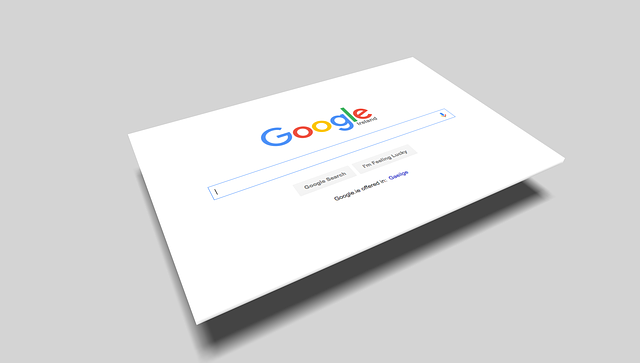Many businesses recognize the need for a Website Redesign when their current site falls short. This process involves analyzing performance, user experience, SEO, and business goals. By adopting a strategic approach, companies can create a visually appealing, mobile-optimized, fast-loading website with integrated analytics and tailored features. A successful redesign drives growth, improves engagement, and strengthens the brand's online presence.
Key steps include identifying slow loading times, downtime, outdated content, and usability issues. Evaluate SEO capabilities and set clear goals based on business objectives and target audience needs. Conduct competitor analysis and industry research to understand trends and differentiate your site. By focusing on user experience, engagement, and SEO strategies, the redesigned website will meet expectations and achieve desired outcomes.
Your website is more than just digital real estate; it’s your business’s face in the digital world. If it’s showing its age, it could be hindering growth and turning potential customers away. A custom website overhaul isn’t just a facelift—it’s a strategic approach to boost user experience, slash bounce rates, and skyrocket conversions. This article guides you through every step of transforming your online presence, from identifying design flaws and setting achievable goals to choosing the right tools, creating captivating designs, optimizing for speed and SEO, enhancing UX with interactive elements, and ensuring a smooth post-launch journey.
Understanding the Need for a Custom Website Overhaul

Many businesses and organizations realize the need for a website redesign only after their existing site fails to keep up with evolving business needs or changing customer expectations. In today’s digital era, where online interactions are the norm, a website isn’t just a virtual business card; it’s a storefront, a marketing tool, and a source of critical customer data. An outdated or poorly designed site can deter potential customers, hinder sales, and damage brand reputation.
Custom website overhaul, or Website Redesign, goes beyond mere cosmetic changes. It involves a thorough analysis of the current site’s performance, user experience, search engine optimization (SEO), and business objectives. By adopting a strategic approach, businesses can create a new website that not only enhances visual appeal but also optimizes for mobile devices, improves loading speeds, integrates advanced analytics tools, and incorporates features tailored to their unique requirements. This transformative process ensures the website becomes a dynamic asset that drives growth, fosters engagement, and solidifies the brand’s online presence.
– Identifying issues with current website

Identifying issues with your current website is a crucial first step in any successful Website Redesign. Start by evaluating its performance: is it slow loading, or experiencing frequent downtime? Check for outdated content that fails to engage modern audiences and a design that doesn’t align with contemporary aesthetics. Look for usability problems like complex navigation or poorly optimized mobile layouts, which can drive visitors away.
Additionally, consider your website’s SEO (Search Engine Optimization) capabilities. Is it properly indexed by search engines? Does it lack essential meta tags, keywords, and quality backlinks? Analyzing these aspects will help you pinpoint areas where your current site falls short in attracting organic traffic and converting visitors into customers.
– Outdated design and its impact on user experience and SEO

An outdated website design can significantly hinder user experience and negatively impact search engine optimization (SEO), two critical aspects for online success. Users today expect sleek, modern interfaces that offer seamless navigation and quick loading times. An old, clunky website with dated visuals and complex layouts may frustrate visitors, causing high bounce rates and low engagement. This can directly affect SEO rankings as search engines prioritize user-friendly sites with active, satisfied visitors.
A custom website overhaul, including a Website Redesign, addresses these issues by incorporating best practices in UX design and leveraging SEO strategies. A new design can improve accessibility, enhance visual appeal, and optimize content for both users and search engines. This transformation ensures the website keeps pace with industry trends, competitors’ innovations, and evolving user preferences, ultimately driving better online performance and growth.
Setting Clear Goals for Redesign

Before initiating any Website Redesign, setting clear and achievable goals is paramount. This involves understanding your business objectives, target audience, and the overall purpose of the updated site. Define key performance indicators (KPIs) to measure success; whether it’s increasing conversions, improving user engagement, or enhancing brand visibility.
For instance, if your primary goal is to boost sales, focus on creating a seamless purchasing experience, optimizing product pages, and integrating effective call-to-actions. Alternatively, if the aim is to enhance user experience, prioritize intuitive navigation, fast loading times, and visually appealing content that resonates with your target demographic. Having concrete goals will guide the redesign process, ensuring every element contributes to achieving your desired outcomes.
– Defining business objectives

Before embarking on a website redesign, clearly defining your business objectives is paramount. This step serves as the compass guiding your project, ensuring every decision aligns with your goals and target audience needs. Start by identifying key performance indicators (KPIs) you wish to improve, be it increasing conversions, enhancing user engagement, or boosting brand awareness.
Consider your current website’s strengths and weaknesses in relation to these objectives. What aspects are performing well and what areas need significant improvement? This analysis will help you prioritize features and functionalities for the new design, creating a tailored online presence that resonates with your audience and drives business success.
– Understanding target audience and their expectations

Understanding your target audience and their expectations is a cornerstone in any Website Redesign project. This involves meticulously researching and analyzing who your potential visitors are, what they seek from your site, and how they prefer to interact with content online. By gathering insights through surveys, analytics, focus groups or studying user behavior on competitor sites, you can tailor design elements like navigation, visual aesthetics, and content delivery to meet—and exceed—user expectations. Such a strategic approach ensures that the revamped website resonates with your audience, fostering engagement, enhancing user experience, and ultimately driving conversions.
Conducting a Thorough Analysis of Competitors

Before initiating any Website Redesign project, a thorough analysis of competitors is paramount. This process involves meticulous research and evaluation to understand what works and what doesn’t in the current market landscape. By scrutinizing direct rivals as well as industry leaders, you gain valuable insights into user experience trends, design aesthetics, content strategies, and technical implementations.
Competitor analysis allows for informed decisions about your own website’s features, functionality, and overall user journey. It helps identify gaps in existing offerings and highlights opportunities to differentiate your site, ensuring a unique and compelling online presence.
– Researching industry standards

Before embarking on a custom website overhaul or redesign, thorough research into industry standards is non-negotiable. This involves understanding the latest trends, best practices and user expectations that shape the digital landscape. By studying successful websites within your niche, you gain valuable insights into effective design elements, content strategies, and functionalities that resonate with your target audience.
Such research empowers you to make informed decisions tailored to your brand’s unique identity and goals. It ensures your new or updated website not only aligns with industry benchmarks but also exceeds them, fostering a user experience that is both engaging and conversion-driven.
– Learning from successful competitor strategies

When planning a custom website overhaul or redesign, learning from successful competitor strategies is invaluable. By studying what works and what doesn’t in your industry, you gain insights that can set your site apart. Keep an eye on top-performing sites within your niche to identify trends, design elements, and user experiences that resonate with your target audience. Incorporate these lessons into your redesign, but always tailor them to match your unique brand identity and goals. This blend of industry knowledge and creative differentiation will help ensure your new website makes a lasting impact, driving engagement and conversion rates higher than ever before.
